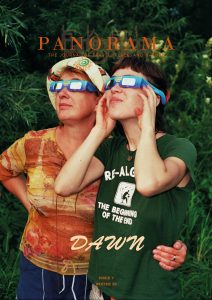Pillars came before wheels. They decorated temples in Turkey more than 11,000 years ago, they held aloft roofs in Gujarat 4500 years ago but that wasn’t why I wanted a home with pillars. I was trying to replicate an ancestral Indian home, where elders mingled after dinner while the children ran amok, their hands grasping the pillar as they puffed or fell. What I had in mind were slender wooden posts scruffy with age, possessors, of dignity that would imbue the house instantly with a timelessness that would keep me anchored between the past and the present. I had never lived in such a house but had felt it live and grow within me through seventeen homes in three continents over four decades until my husband and I moved to Hyderabad.
Settling here felt right. The city comfortably folded the new with the old: palaces became hotels; highways snaked around ancient rocks; mosques and temples abounded but so did libraries and bookstores. Our house arose from paper to bricks in three years giving me enough time to scout for abandoned pillars and discarded desks. I found tiles embossed with peacocks for the kitchen wall. Rescued pillars from a neighbourhood warehouse separated the living room from the dining. An antique rosewood plank suspended by heavy brass chains swung in the living room. This I had imagined would be enough. But within the confines of the home fitted with parts from elsewhere like the ship of Theseus, I felt removed as if looking from outside at a picture postcard of someone else’s home.
Even the pillars, now sanded to reveal a ring of mahogany beads in the neck, didn’t beckon, or if they did, I was surprisingly unmoved. Around this time of vague estrangement, I began work on the garden. This jolted my family awake. My mother-in-law arrived by train from Chennai closely guarding her wards: five jasmine plants, each with a unique scent, wrapped in moist and muddy jute bags. We planted them in a circle under the cherry tree near the entrance. My mother and her sister, my aunt, flew in from deep south with a hidden cargo of lily tubers they procured from a temple pond. Untangling the muddy roots, we planted them in a barrel-sized pot which we filled with water and tiny fish that swam incessantly.
We encircled the house with fruit trees: Three mango trees along the western wall – fleshy banganapalli, fragrant imam pasand and juicy dasheri; on the narrow strip along the east, we planted chickoo, guava and sitaphal; the backyard, a step away from the kitchen, was reserved for seasonal vegetables and staples: cilantro, lemongrass, and basil. A stout, reluctant coconut tree occupied the corner adjacent to the vegetable bed. It refused to grow, and we forgot about it as we were transfixed by the lanky and prolific papaya that stood alongside, bearing bulbous fruit year after year. Our front yard was coloured with hibiscuses: purple, pink, blue, white.
Lilies are fickle but, in a few days, shiny dark-green leaves emerged. Within a year or two the garden grew. Mango trees blossomed. Chickoofruited. The pond-in-a-pot with its pink and purple blooms was a miniature of the lotus tank in my grandfather’s village before it dried and filled with huts.
I began spending more time in the garden. A small stone bench facing the pond became my refuge. I would sit here after work with my cup of tea watching the lilies, the orange sunset behind me. On a Sunday morning, while the house slept, I slipped out to my refuge. A lone purple lily sparkled in the sun, its yellow anthers gathering mist while a blue dragonfly fluttered above. Watching the filmy wings was a fat toad, perched on the rim as if ready for a dive.
Invisible to me was the world contained within the deceptively still water, where tiny fish darted between the swaying forest of roots. When I encounter astounding beauty, my breath slows to an imperceptible whisper as though afraid to come between me and the world. I leaned back against the parapet wall where the golden leaves of the Buddha bamboo I had planted last year brushed against my face. Above the bamboo, loomed the umbrella canopy of Gulmohar that bursts into orange in peak summer, and above its crown, the telephone lines on which the resident green-bee eaters rested after dive-snatching bugs mid-air.
My body relaxed, I curled my toes and felt the shaved grass poke the soles of my feet. Beneath the grass was a skin of moist soil beneath that a thick chocolatey layer studded with pebbles and wriggly earthworms and beneath all of this, the hard almost impenetrable rock that forms some of the oldest parts of the Deccan plateau, older than the Himalayas. About 2.5 million years old. Relatively speaking, you and I are babies. Relatively speaking, you and I are connected. What we ultimately strive for and struggle in the lack of, in our lives and our relationships, a deep connection, I felt it effortlessly on the bench that Sunday afternoon. Above and below, seen and unseen, life stretched her limbs everywhere, with us enmeshed in it. Few moments make such connections tangible, this was one of them. A moment that felt whole, that firmly placed me in the world where I knew I belonged while also reminding me of the significance of all lives. It wasn’t pillars or swings that I needed, just trees.











